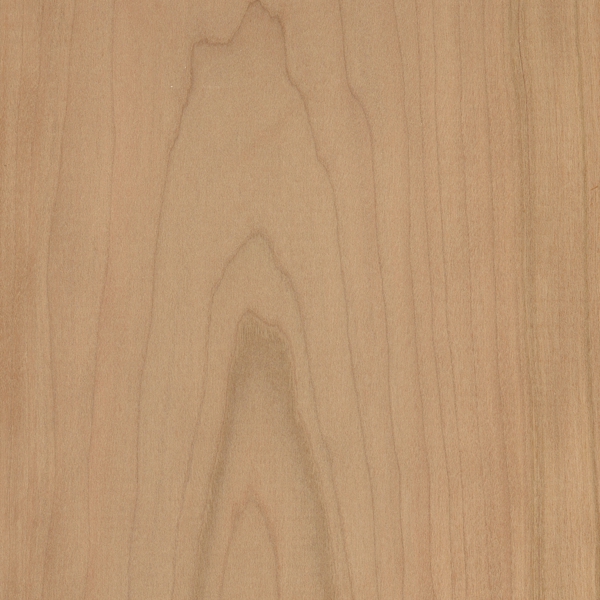Cherry
Color/Appearance: Heartwood is a light pinkish brown when freshly cut, darkening to a deeper golden brown with time and upon exposure to light. Sapwood is a pale yellowish color.
Grain/Texture: Has a fine texture with close grain. The grain is usually straight and easy to work—with the exception of figured pieces with curly grain patterns.
Endgrain: Semi-ring-porous to diffuse-porous; small pores in no specific arrangement; solitary and radial multiples of 2-3; mineral/gum deposits occasionally present; growth rings usually distinct due to a concentration of earlywood pores; rays visible without lens; parenchyma absent.
Rot Resistance: Heartwood is rated as being very durable and resistant to decay.
Workability: Cherry is known as being one of the best all-around woods for workability. It is stable, straight-grained, and machines well. The only difficulties typically arise if the wood is being stained, as it can sometimes give blotchy results due to its fine, closed pores.
Odor: Has a mild, distinctive scent when being worked.
Sustainability: This wood species is not listed in the CITES Appendices or on the IUCN Red List of Threatened Species.
Common Uses: Cabinetry, fine furniture, flooring, interior millwork, veneer, turned objects, and small specialty wood items.
Comments: Black Cherry develops a rich reddish-brown patina as it ages that’s frequently imitated with wood stains on other hardwoods such as Yellow Poplar (Liriodendron tulipifera). This aging process can be accelerated by exposing the wood (in a judicious manner) to direct sunlight.”



